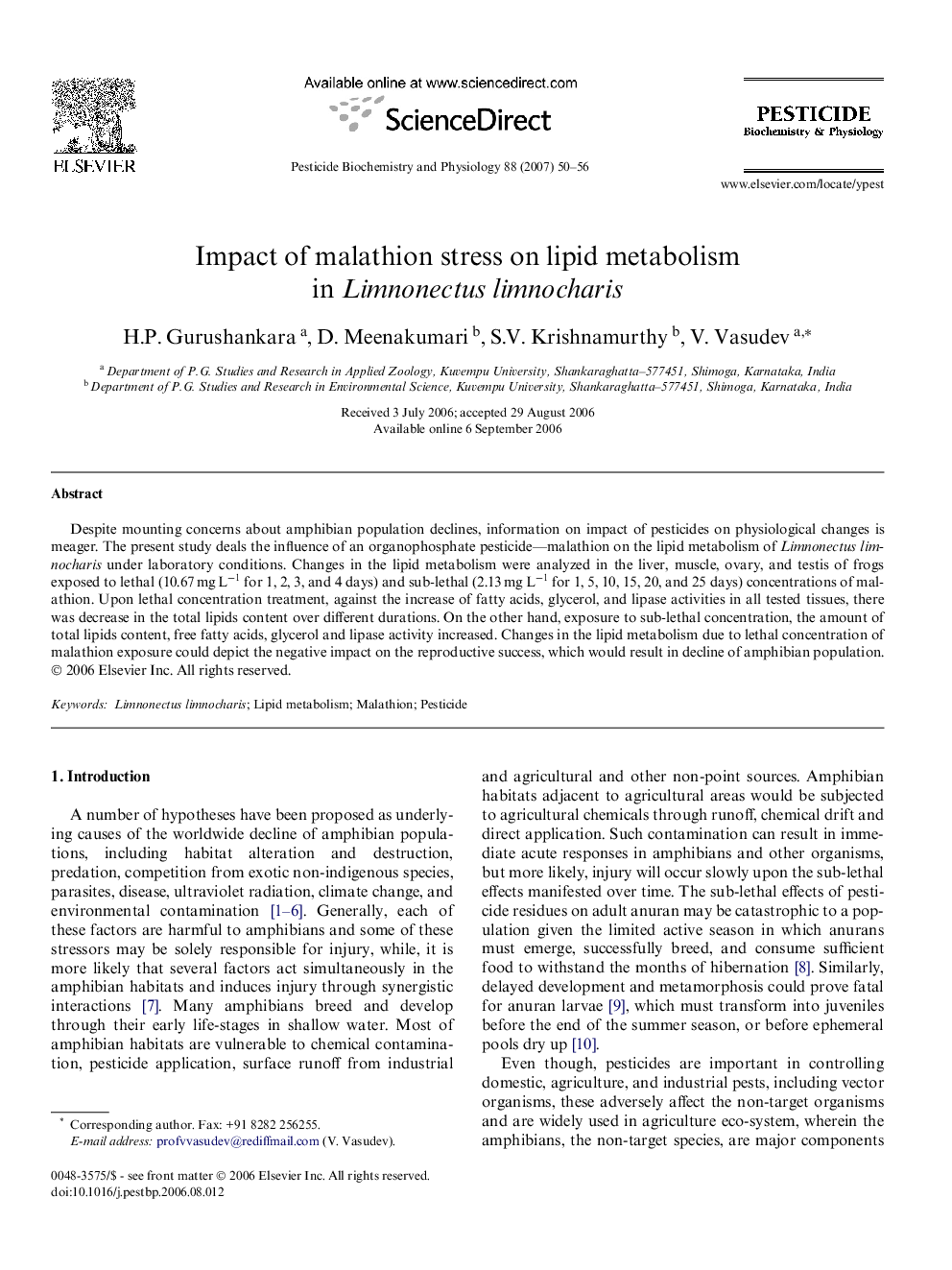| Article ID | Journal | Published Year | Pages | File Type |
|---|---|---|---|---|
| 2010331 | Pesticide Biochemistry and Physiology | 2007 | 7 Pages |
Despite mounting concerns about amphibian population declines, information on impact of pesticides on physiological changes is meager. The present study deals the influence of an organophosphate pesticide—malathion on the lipid metabolism of Limnonectus limnocharis under laboratory conditions. Changes in the lipid metabolism were analyzed in the liver, muscle, ovary, and testis of frogs exposed to lethal (10.67 mg L−1 for 1, 2, 3, and 4 days) and sub-lethal (2.13 mg L−1 for 1, 5, 10, 15, 20, and 25 days) concentrations of malathion. Upon lethal concentration treatment, against the increase of fatty acids, glycerol, and lipase activities in all tested tissues, there was decrease in the total lipids content over different durations. On the other hand, exposure to sub-lethal concentration, the amount of total lipids content, free fatty acids, glycerol and lipase activity increased. Changes in the lipid metabolism due to lethal concentration of malathion exposure could depict the negative impact on the reproductive success, which would result in decline of amphibian population.
